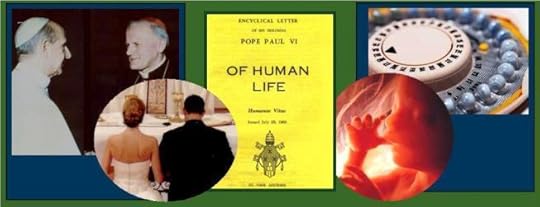Carl E. Olson's Blog, page 169
February 4, 2013
Decline and Fall. And Hope.

Decline and Fall. And Hope. | Edmund J. Mazza, PhD | Catholic World Report
Americans would do well to ask the question posed by Ponticianus’ sixteen
centuries ago: “What is our aim in life?”
Perhaps Rome is not perishing; perhaps she is only
scourged, not utterly destroyed; perhaps she is chastened, not brought to nought. It may be so;
Rome will not perish, if the Romans do not perish. And perish they will not if they praise God;
perish they will if they blaspheme Him.
— St. Augustine
I was so stupefied
and dismayed that day and night I could think of nothing but the welfare of the
[Christian] community; it seemed as though I was sharing the captivity of the
saints, and I could not open my lips until I knew something more definite; and
all the while, full of anxiety, I was wavering between hope and despair, and
was torturing myself with the misfortunes of other
people. But when the bright light of all the world was put out, or, rather,
when the Roman Empire was decapitated, and, to speak more correctly, the whole
world perished in one city. ‘I became dumb and humbled myself, and kept silence
from good words, but my grief broke out afresh, my heart glowed within me, and
while I meditated the fire was kindled;’
— St. Jerome
From his monastic cell in Bethlehem, the great Western Father and Doctor
of the Church, St. Jerome bewailed Late Antiquity’s “9/11,” the Fall of Rome.
Rome’s fall has been an object of fascination for western writers, not least
because ever since the Founding Fathers, patriotic Americans have seen
parallels between that shining city on seven hills and our own noble republic.
Indeed, events of the last few years have called into question whether America
herself is now likewise doomed to irreversible “decline and fall.”
On August 24, 410, Rome was sacked by the warlord Alaric and his army of
rampaging Goths. When a starving populace admitted the barbarian horde on that
fateful August day, it was the first time in an astounding 800 years that enemy
soldiers had ever breached the imperial capital’s defenses. Although their
attackers were actually Arian Christians (deniers of Christ’s divinity) who
spared churches and practiced some measure of clemency, the psychological
impact of such a blow for the greater Roman world (some thirty million souls or
more) is hard to underestimate. Rome was, after all “the light,” according to
Jerome, and that is also how general Maximus characterizes it to an elderly
Emperor Marcus Aurelius in the Academy award winning “Gladiator.” The
battle-tested legionary has seen much of the rest of the world, and it is
“brutish and dark.”
Not just modern film-makers, however, but modern historians, as well,
beginning with Edward Gibbon in 1776, have tended to agree with both Jerome
and the general. They have seen, starting with the reign of Marcus’
megalomaniacal son Commodus, in AD 180, a steady and almost inevitable decline
of the greatest civilization man had yet produced, with the disasters of the
fifth century fully emblematic of its final, fitful death throes. For Gibbon,
“Christianity and barbarism,” were ultimately to blame for bringing down the
Empire, and ushering in the “Dark Ages.”
Now it must be said there is much evidence for a genuine “Decline” and
“Fall” in the historical record (whether Christianity is to blame is another
matter). As Bryan Ward-Perkins recently recorded of material existence in Roman
Britain at the fortress of Vindolanda on Hadrian’s Wall:
February 2, 2013
The motive and mission of the true prophet
A Scriptural Reflection on the Readings for Sunday, February 3, 2013 | Carl E. Olson
Readings:
• Jer 1:4-5, 17-19
• Ps 71:1-2, 3-4, 5-6, 15-17
• 1 Cor 12:31—13:13 or 13:4-13
• Lk 4:21-30
The nineteenth-century poet Thomas Moore once observed: “The prophet ill sustains his holy call/Who finds not heav’n to suit the tastes of all.” There have long been false prophets who have sought to tickle the ears of the people in order to acquire money, power, and fame. In our day and culture, we can easily point to televangelists as heirs to false prophets, but such sophists and con men come in many forms. The words of the Apostle John are as true today as they were in the first century: “[M]any false prophets have gone out into the world” (1 Jn 4:1).
But what is a prophet? What does a true prophet do? Yes, often says things about the future; the Old Testament prophets frequently spoke about future events. But most prophecy had as much to do with the moral choices of ordinary people as it did with earth-shaking events. Prophetic utterances were often exhortations to holiness, to authentic worship, and to zealous love for God and neighbor. Prophets such as Jeremiah and Elijah (both part of today’s readings) were called to tell the truth about God and to proclaim God’s Word to the people. Thus, the false prophet lies about God and leads people away Him.
Young Jeremiah, not even thirty years old, began to prophecy during a time of extreme political turmoil and overt apostasy. The people of Judah had turned away from the worship of Yahweh and were worshipping Baal. Jeremiah was told three things: he was chosen before birth by God to be a prophet, he would suffer persecution for his witness, and he would be sustained by the Lord. In a similar vein, the responsorial Psalm praises God for His sustaining salvation: “On you I depend from birth; from my mother’s womb you are my strength.” The mission of the prophet is summed up well in the refrain: “I will sing of your salvation.”
The reading from Paul’s first letter to the church at Corinth provides a perfect theological bridge to the event described in today’s Gospel. 1 Corinthians 13 is a well-known passage, nearly poetic in nature, about the theological virtue of love. The relationship between prophecy and love is not commonly remarked upon, but Paul, himself an apostle and prophet, states, “And if I have the gift of prophecy, and comprehend all mysteries and all knowledge; if I have all faith so as to move mountains, but do not have love, I am nothing.”
Love first; all else follows. Why? First, because God is Love, the perfect and eternal communion of three Persons, Father, Son, and Holy Spirit (cf. I Jn 1:5; 4:8; CCC 214, 218-221). Secondly, because the greatest commandment is to “love the Lord, your God, with all of your heart, with all of your soul, and with all of your mind” (Matt 22:34-40; CCC 2055). Third, because the true prophet is a child of God who loves God and others and who speaks the truth about God. Love, Paul wrote, does not seek its own interests, “but rejoices with the truth.”
The reading from Luke’s Gospel demonstrates that those who seek their own interests and do not love the truth will despise the true prophet. At first the people were taken with Jesus and His message. But when Jesus made it clear—by comparing His mission to that of Elijah—that He came to reach the Gentiles as well as the Jews, matters turned ugly. Jesus was no longer accepted in His own country because He made it clear that His work of salvation is meant for all men, even those beyond His country.
By virtue of being baptized into Christ, all Christians, including the laity, are called to participate in the prophetic work of their Savior (CCC 904-905). “By virtue of their prophetic mission,” states the Catechism “lay people ‘are called . . . to be witnesses to Christ in all circumstances and at the very heart of the community of mankind’” (CCC 942; cf CCC 871). Like Jeremiah, every child of God is known by his heavenly Father before he is born. Being a prophet means evangelizing however we can, by both word and deed, proclaiming the truth about God no matter the tastes of the listeners.
(This "Opening the Word" column originally appeared in the January 28, 2007, edition of Our Sunday Visitor newspaper.)
Tolkien and Lewis at the Movies: An Interview with Dr. Richard Purtill
 and local publications.
and local publications. Dr. Purtill shared his thoughts on the several recent movies based on the works of Tolkien and Lewis.
Q:
Steve Jackson’s The Lord of the Rings movies proved very
popular, as has the first of the three Hobbit films. But aren’t
they being released backwards? Wasn’t the Hobbit written
first?
Purtill:
There’s nothing wrong with writing a prequel to an existing book,
or in this case, a movie. That’s the back story to something. There
are various reasons for writing a prequel. Sometimes you write
something interesting and you say, how did this situation evolve? Or
it may be that your first book wasn’t successful, but your second
was, so it’s released first. There’s nothing wrong with it in
principle. It may be that you encounter the Hobbit first, as
many of us did. Or, you may read The Lord of the Rings first,
and then you want to read something about Bilbo Baggins, and read his
story in The Hobbit.
Q:
Do you think seeing the movies will make people want to read the
books. Do they have the same audience?
Purtill: Not necessarily. There are a lot of things in the movies that are
expansions of things that aren’t all that important in the books.
It’s hard to say. It’s probably an individual judgement. Some
people might like the movies. Other people may say, oh this isn’t
like the book, I don’t like it.
Q:
If someone were new to reading Tolkien, would you suggest starting
with The Hobbit?
Purtill:
I would think so. If you say, this is an example of the work of
Tolkien, I think it would be a good idea. It’s a very good book and
very interesting.
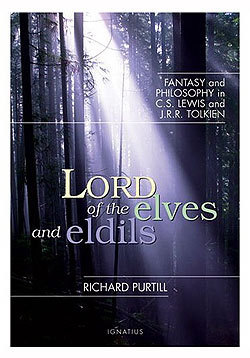
Q:
How can The Hobbit be stretched out over three movies?
Purtill: That is a problem. I can see it doing two movies. You have the scene
at the end of the first movie with the eye of the dragon. The Hobbit
isn’t really a small book. It’s 317 pages in the old hardback
edition I have. It’s quite an interesting book, with lots of things
to discover.
Q:
So we have two more Hobbit films over two more years. Is there any
more of Tolkien that could be filmed?
Purtill: Actually, I think you could make a rather interesting story, which
would be very unlike than The Lord of the Rings, out of “Leaf
By Niggle”. That’s a story that I talk about in my book, Lord
of the Elves and Eldils. It’s a story about a man who has to go
on a journey, and could be interpreted in three different ways. It
was published separately in a book called Tree and Leaf, but
the most convenient way of getting it is in The Tolkien Reader,
which contains that story and other works by Tolkien.
Q:
What about C.S. Lewis‘ Narnian films?
Purtill:
I think the first Narnian movie, The Lion, the Witch, and the
Wardrobe, was rather unsuccessful. They tried to add too much of
their own interpretation. The second one, Prince Caspian, was
better, and the third one, despite my initial negative reaction to
it, I’ve come to decide is a pretty good movie — The Voyage of
the Dawn Treader. They’re going to find it very difficult to do
the next one, The Horse and His Boy, because it takes place
completely in Narnia. Except for the kings and queens, who are
lightly mentioned, it’s really not a story about our world at all.
But the BBC also filmed the first three Narnian books some time back.
They did so on a somewhat lower budget. They’re sort of like filmed
plays. But they stick close to the books, and are very good.
Q:
Are there any other Lewis books one could film?
Purtill: I’d be interested in seeing somebody do Out of the Silent
Planet, which has a lot of good scenes in it. You could make a
very interesting movie out of it. The thing is, there are too many
scientific facts we know now about Mars, which are wrong in the book.
But you could get around that by saying that the eldils who rule Mars
(Malacandra) have decided they don’t want any truck with human
beings so they alter the instruments of our Mars probes to make Mars
look like a desert planet. You had the same situation with Edgar Rice
Burroughs‘ John Carter of Mars, which Disney just made into
a successful movie.
Q:
Out of the Silent Planet is the first book of a trilogy,
isn’t it?
Purtill: Yes. Perelandra is the second book, and they’d have to do
the same thing with that, because we know too much about Venus. That
Hideous Strength, the third book, I think would make a very good
movie. In fact, it might make two or three movies, as it’s a long
and complex work.
Q:
What do you think Tolkien would have thought of the films?
Purtill:
I think he would be against filming his books. I think he would say,
“What I’ve written I’ve written”. He didn’t like any
vulgarizations, as he called them. But he would probably also be
delighted to see how popular his books have become, and surprised to
see us analyzing them. I’m not sure what he’d think about my
books.
• Visit the Ignatius Insight author page for Richard Purtill.
February 1, 2013
The Latest From the “Pius Wars” Front
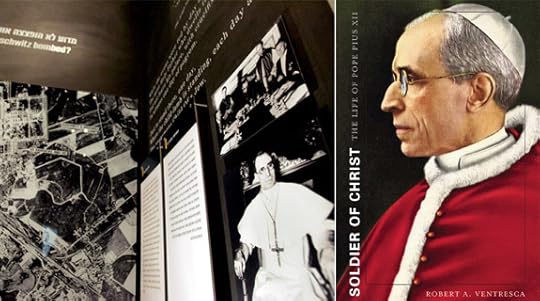
The Latest From the “Pius Wars” Front | Michael Coren | Catholic World Report
The new book, Soldier of Christ , published by Harvard University Press, is a definitive biography of Pope Pius XII
There’s a running joke in Canada about our charming sense of delicate hubris. A
Toronto newspaper headline wryly proclaims: “Man Lands on Moon. Boots made in
Montreal!” In other words, we’re only 30 million strong and we’re invariably
mistaken for quiet Americans, and so when we do achieve something remarkable,
even of a minimal variety, we like people to know.
Which is why the world needs to know that what will now be
the standard life of Pope Pius XII—the definitive biography of the wartime
pontiff at least for the present—has just appeared. And it was written by a
Canadian academic. It’s true that Harvard University Press published the book,
but Robert
A. Ventresca is a professor at King’s College at Western University in
London, Ontario. And his new volume, Soldier
of Christ: The Life of Pope Pius XII is
a splendid work.
It won’t be the last word in the “Pius wars”, of course, but it is one of the
best. It depicts a profoundly good and devout man who, contrary to what the
critics have claimed, had absolutely no personal animus against Jewish people,
was active in the struggle against Nazism, and was clearly and transparently
the victim of a concerted attempt to libel him and by extension the Papacy, the
Church, and serious Catholicism. Ventresca does agree that were times, both
before and during the war, when Pius could have been more specific in
mentioning Jewish targets of Nazi eugenics and oppression, but that’s about as
severe as the censorship goes.
I’ve obsessed about this issue for some years, partly out of familial and
emotional necessity, in that I am a Catholic whose father was Jewish. He was
not only Jewish but also from a Polish family.
Continue reading at www.CatholicWorldReport.com.
Related articles
 Coren on Conversion, Canada, and Lies About Christianity
Coren on Conversion, Canada, and Lies About Christianity The Tale of Two Religions
The Tale of Two Religions New: "History of the Catholic Church: From the Apostolic Age to the Third Millennium"
New: "History of the Catholic Church: From the Apostolic Age to the Third Millennium"
January 31, 2013
Great New Books and Films from Ignatius Press

Great New Books and Films from Ignatius Press
Offer ends Tuesday February 5th, 2013 at 12:00 midnight EST. These prices are available online only through Ignatius.com
Inspiring and exciting new books and films are now available! Beautifully illustrated versions of The Hobbit and The Lord of the Rings make a great gift for the J.R.R. Tolkein fan. If you haven’t read the best-seller by Mary Eberstadt Adam and Eve After the Pill, now is your chance to get a copy in the new paperback edition and learn more about the recently canonized Saint Kateri Tekakwitha in the new informative documentary In Her Footsteps. These new titles and more are available now at 20%! Join Ignatius Press on a Saint Paul & Bible Lands Pilgrimage Cruise with Steve and Janet Ray
Join Ignatius Press on a Saint Paul & Bible Lands Pilgrimage Cruise with Steve and Janet Ray
Ignatius Press with President Mark Brumley and Father Mark Mary invite you on a Saint Paul & Biblical Lands Mediterranean Cruise and Pilgrimage led by Steve and Janet Ray.
For more information about this exciting two week pilgrimage, click here.
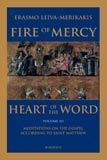 Fire of Mercy, Heart of the Word, Vol. 3
Fire of Mercy, Heart of the Word, Vol. 3
Erasmo Leiva
To the unstudied eye, St. Matthew's gospel can seem a terse narrative, almost a historical document and not the tremendously spiritual (and doctrinal) storehouse that it is. In his third volume of meditations on Matthew (chapters 19-25), Erasmo Leiva continues to show Matthew's prose to be not terse so much as economical-astoundingly so given its depth. Also available as an e-book.
Regular price: $31.95, sale price: $25.56
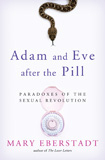 Adam and Eve After the Pill - Now in Paperback!
Adam and Eve After the Pill - Now in Paperback!
Mary Eberstadt
Adam and Eve after the Pill examines as no book has before the seismic social changes caused by the sexual revolution. In examining human behavior in the post-liberation world, Eberstadt provocatively asks: Is food the new sex? Is pornography the new tobacco? Adam and Eve after the Pill will change the way readers view the paradoxical impact of the sexual revolution on ideas, morals, and humanity itself. Also available as an e-book
Regular price: $15.95, sale price: $12.76
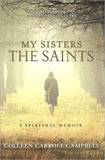 My Sisters the Saints
My Sisters the Saints
Colleen Carroll Campbell
In My Sisters the Saints, author Colleen Carroll Campbell blends her personal narrative of spiritual seeking, trials, stumbles, and breakthroughs with the stories of six women saints who profoundly changed her life: Teresa of Avila, Therese of Lisieux, Faustina of Poland, Edith Stein of Germany, Mother Teresa of Calcutta, and Mary of Nazareth.
Regular price: $22.95, sale price: $18.36
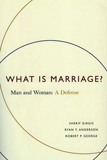 What is Marriage?
What is Marriage?
Robert George, Sharif Girgis, Ryan Anderson
Until today, no society had seen marriage as anything other than a conjugal partnership: a male-female union.What Is Marriage?identifies and defends the reasons for this historic consensus and shows why redefining civil marriage is unnecessary, unreasonable, and contrary to the common good.
Regular price: $15.95, sale price: $12.76
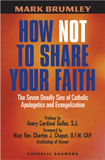 How Not to Share Your Faith
How Not to Share Your Faith
Mark Brumley
In How NOT to Share Your Faith, Brumley describes seven of the most common and tragic mistakes he and other apologists have made over the years in their attempts to defend and explain the Catholic faith. More importantly, he reveals how you can avoid these mistakes and become far more effective at sharing your faith in a charitable way-even if that means losing an argument from time to time.
Regular price: $12.95, sale price: $10.36
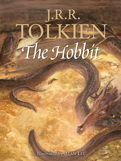 The Hobbit
-
Illustrated Gift Edition
The Hobbit
-
Illustrated Gift Edition
J.R.R. Tolkien
This lavish gift edition of J.R.R. Tolkien's classic features cover art, illustrations, and water color paintings by the acclaimed artist Alan Lee. Bilbo Baggins is a hobbit who enjoys a comfortable, unambitious life, rarely traveling any farther than his pantry or cellar. But his contentment is disturbed when the wizard Gandalf and acompany of dwarves arrive on his doorstep one day to whisk him away on an adventure.
Regular price: $35.00, sale price: $28.00
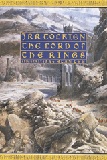 The Lord of the Rings -Commemorative Edition
The Lord of the Rings -Commemorative Edition
J.R.R. Tolkien
This glorious over-sized deluxe volume is a treasure for Tolkien fans—The Lord of the Rings in a special commemorative edition with 50 inspired illustrations by Alan Lee, a noted English artist whose vision matches Tolkien's own! This stunning single-volume tome features the entire trilogy with maps, lay-flat binding, and ribbon marker. The book to have for all serious Tolkien readers.
Regular price: $69.95, sale price: $55.96
Films
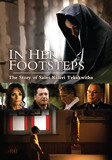 In Her Footsteps
In Her Footsteps
The Story of Saint Kateri Tekakwitha
For 350 years, a young Christian Mohawk woman has been interceding for and inspiring natives and non-natives around the world. On October 21, 2012, Kateri Tekakwitha became the first Native North American woman to be recognized as a Saint. This moving documentary takes us on a journey from northern New York State to Montrèal and Kahnawake; from Washington State to New Mexico, as we follow St. Kateri's incredible journey of deep faith, heroic sacrifice and love of Christ.
Regular price: $19.95, sale price: $15.96
 Powers and Dominions
Powers and Dominions
Angels, Demons and Spiritual Warfare
In all of God's creation we see such splendor and beauty, mystery and wonder. Within this creation there are beings with intellect and free will: humans and angels. Featuring well-known speakers and authors Steve Ray, Fr. Andrew Pinsent, Fr. Marcus Holden, Joanna Bogle, Fr. Jeremy Davies and Fr. Behruz Rafat, this film offers an insightful and sobering presentation about the reality of the powers and dominions of the spiritual world.
Regular price: $19.95, sale price: $15.96
 The Face of Jesus in Art
The Face of Jesus in Art
Narrated by Mel Gibson, Stacy Keach, Ricardo Montalban, Patricia Neal and others, this Emmy-winning program traces the dramatically different ways in which Jesus has been represented in art by people throughout history and around the world. Spanning the early 3rd century to the present, and featuring some of the greatest works in the history of art, this sweeping program is an unprecedented travelogue of art and monuments.
Regular price: $14.95, sale price: $11.96
 The Courageous Heart of Irena Sendler
The Courageous Heart of Irena Sendler
This is the compelling story of Polish Catholic social worker, Irena Sendler, one of the most remarkable, and unlikely, heroes of World War II, saving 2,500 Jewish children during the Nazi occupation of Poland. Irena was eventually captured by the Gestapo, but even after months of torture, she maintained her silence. Her heroic efforts were honored by a nomination for the Nobel Peace Prize in 2007.
Regular price: $19.95, sale price: $15.96
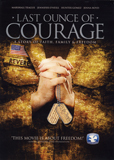 Last Ounce of Courage
Last Ounce of Courage
An intergenerational story about family, freedom, and taking a stand for cherished beliefs. A family is struck by tragedy when a young man is lost in combat overseas, leaving behind a wife and young son. Years later, the fallen soldier's father serves as mayor of a small town where powerful Washington interests seek to stamp out religious expression. The soldier's son, now a young man, inspires his grandfather to take a stand for the ideals and traditional values that our heroes in uniform sacrifice everything to protect.
Regular price: $19.95, sale price: $15.96
Catholic World Report
A Younger Generation Marches for Life
by John Burger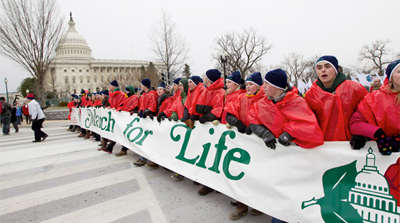
The 2013 March for Life, which marked the 40th anniversary of Roe v. Wade, was a youthful and youth-filled event.
WASHINGTON, D.C. — In the beginning, Nellie Gray imagined there would be a need for one march for life. It was a year after the Roe v Wade decision, and there was perhaps just enough outrage that people felt a legislative remedy could be attained. “But then we realized that Congress wasn’t going to help, so we had a second,” Gray reflected. And a third, and a fourth…
Homiletic & Pastoral Review
Why Do We Believe?
Stephen J. Morrissey
The dynamics of Catholic faith-building are thus severely attacked today by many in the sciences who quite glibly point out that the evidence of science trumps the evidence of religion.
The Year of Faith is a most appropriate time to address a significant problem that many Catholics wrestle with: Why do we believe in a beneficent God and the doctrines of the Catholic Church? “Faith” is the common response to that question, but faith in what? What is the evidence upon which that faith rests, and is it reliable? Does the Church ask for blind, unreasoned faith? Amidst the current onslaught of atheistic claims that the “hard” evidence from science has solved the mystery of the universe’s origin and that God had nothing to do with it, the challenge before us is whether Catholics are clinging to outmoded thoughts, lingering from a primitive past, with no provable evidence.
Our friends at the Dominican School of Philosophy and Theology will host the following events. Those in the Bay Area can attend in person. Others can watch by streaming video:
Natural Law in American Rhetoric, Jurisprudence, and Governance
Thursday, January 31, 7pm
This event will be a stimulating evening discussion with Russell Hittinger, William K. Warren Professor of Catholic Studies and Research Professor of Law at the University of Tulsa; Jean Porter, John A. O'Brien Professor of Theology at the University of Notre Dame; and Lloyd Weinreb, Dane Professor of Law at Harvard University. For more information visit www.dspt.edu/naturallaw. The event will be streamed live - www.dspt.edu/streaming.
From Hollywood to Government to Fortune 500 Advertising - Catholics Engaging Contemporary Society
Presentations by DSPT Fellows
Saturday, February 2, 1:30- 4:30pm
DSPT Fellows are men and women of eminence in diverse fields who have joined DSPT to engage society in a fruitful dialogue about Faith and culture. The Fellows convene each year around the Feast of St. Thomas Aquinas. This year's presentations will be delivered by Ron Austin, Hollywood producer and screenwriter, and author; Gleaves Whitney, Director of Grand Valley State University's Hauenstein Center for Presidential Studies, senior scholar at the Center for the American Idea, and senior fellow at the Russell Kirk Center for Cultural Renewal; and Agnieszka Winkler, Founder and Chairperson of The Winkler Group, a San Francisco based management consultancy specializing in branding and marketing efficiency and effectiveness. For more information, visit our website. The event will be streamed live - www.dspt.edu/streaming.
For Additional Sale Items Click HERE!
Items are not sold on approval.
Periodically we make available -- only to you, our valued repeat customers -- special offers which are not available to the general public. We offer these discounted prices as our gift to those who help us by using Ignatius.com. Please do not ask for retroactive price consideration. We cannot accommodate those requests. Many thanks.
January 30, 2013
Leading scholars to discuss natural law, contemporary society this weekend...
School of Philosophy and Theology in Berkeley, California. Bay
Area folks can attend in person; the events are free of charge. Those who cannot attend can watch by
streaming video:
Natural Law in American Rhetoric, Jurisprudence, and Governance
Thursday, January 31, 7pm
This event will be a stimulating evening discussion with Russell Hittinger, William K. Warren Professor of Catholic Studies and Research Professor of Law at the University of Tulsa; Jean Porter, John A. O'Brien Professor of Theology at the University of Notre Dame; and Lloyd Weinreb, Dane Professor of Law at Harvard University. For more information visit www.dspt.edu/naturallaw.
The event will be streamed live - www.dspt.edu/streaming.
From Hollywood to Government to Fortune 500 Advertising - Catholics Engaging Contemporary Society
Presentations by DSPT Fellows
Saturday, February 2, 1:30- 4:30pm
DSPT
Fellows are men and women of eminence in diverse fields who have joined
DSPT to engage society in a fruitful dialogue about Faith and culture.
The Fellows convene each year around the Feast of St. Thomas Aquinas.
This year's presentations will be delivered by Ron Austin, Hollywood producer and screenwriter, and author; Gleaves Whitney,
Director of Grand Valley State University's Hauenstein Center for
Presidential Studies, senior scholar at the Center for the American
Idea, and senior fellow at the Russell Kirk Center for Cultural Renewal;
and Agnieszka Winkler, Founder and Chairperson of The Winkler
Group, a San Francisco based management consultancy specializing in
branding and marketing efficiency and effectiveness. For more
information, visit our website.
The event will be streamed live - www.dspt.edu/streaming.
Revisiting Humanae Vitae
Revisiting Humanae Vitae | Rob Agnelli | Homiletic & Pastoral Review
What has been summarized as his most profound theological contribution, Theology of the Body, John Paul II labeled the entire work a “rereading of Humanae Vitae.”
Two days after the publication of Humanae Vitae, Pope Paul VI remarked during his Wednesday audience that the encyclical had “clarified a fundamental chapter … in the field of marriage, family and morality.” “Still,” the pope added, “the Magisterium of the Church could and perhaps should return to this immense field with a fuller, more organic and more synthetic treatment.” 1 At the time, this comment must have left an indelible mark on the mind of a Polish cardinal named Karol Wojtyla. Once he became Pope John Paul II, there was no field of theology that he returned to more often than the teachings of Humanae Vitae. In fact, what has been summarized as his most profound theological contribution, Theology of the Body, John Paul II labeled the entire work a “rereading of Humanae Vitae.”2 With the recent controversy surrounding the HHS mandate, it can be highly instructive to reexamine the encyclical in light of the teachings of, not only John Paul II, but the Magisterium as a whole since 1968.
A New Approach
With the advent of the “sexual revolution” and the prevalence of modern rationalism, there was one thing that became readily apparent. The Church could no longer depend on the old pedagogical style of the moral manuals to stem the cultural tide that was pushing for contraception. Although these manuals taught the objective truth, they often came across as legalistic and authoritarian. The Church was viewed as “out of touch” with modern times because the teachings in the classic moral manuals failed to resonate personally with the couples themselves. Because questions of sexual morality are always tied to “the content and quality of the subjective experience” of the couple, 3 the Church had to find a way to speak to couples in this situation.
In many ways, this is what makes Humanae Vitae so groundbreaking for those who have actually read it. The encyclical responds to modern rationalism by framing its moral pronouncement in largely personalist terms.
Continue reading at www.HPRweb.com.
Related articles
 Pope John Paul II and the Christ-centered Anthropology of "Gaudium et Spes"
Pope John Paul II and the Christ-centered Anthropology of "Gaudium et Spes" "Humanae Vitae": 44 years later, it continues to challenge us to love, trust, and sacrifice
"Humanae Vitae": 44 years later, it continues to challenge us to love, trust, and sacrifice "Pope John Paul II, Humanae Vitae, and the Theology of the Body"
"Pope John Paul II, Humanae Vitae, and the Theology of the Body" "This book is a must-have" for arguing against those "who think the sexual revolution a grand thing."
"This book is a must-have" for arguing against those "who think the sexual revolution a grand thing." What is the New Evangelization?
What is the New Evangelization? The Mystery of Creation and the Sacrament of Marriage
The Mystery of Creation and the Sacrament of Marriage
Sacramental Social Doctrine

Sacramental Social Doctrine | William L. Patenaude | Catholic World Report
Authentic Catholic endeavors for social justice must be rooted in the sacramental presence of Jesus Christ.
In their elusive quest for social justice, civil authorities have over the centuries learned much from the Church. As a result, a great many forms of state-sponsored welfare—especially in the growing liberality of the West—are a testament to the two-thousand-year presence of the Gospel and the outpouring of grace in the seven sacraments.
Modern social activists have largely forgotten this. Indeed, the idea that the Church is responsible for the West’s charitable genetic code is unintelligible for many.
This amnesia is a threat to social cohesion and to the state’s desire to attain what is right and just. In forgetting the role Christianity, the West not only forgets its identity but also its strength. Thus it will fail to achieve such goals as universal health care, expansive forms of welfare, and the moral foundations that make civilization possible. In time, as state-mandated compassion meets its limits (financial and otherwise), civil authorities must and will conclude—either through reason or empirical evidence—that governments can only do so much when they actively restrict the presence of God.
The state seeks social and civil justice primarily through the passing and enforcing of laws. In contrast, the Church speaks in her catechism of proposing principles for reflection; providing criteria for judgment; and offering guidelines for action (§2423). The Church does not dictate particular political or social policies. Rather, she hopes to baptize people and cultures in two ways: with the offering of her teachings and with the grace of God.
When we consider the former, the relationship between the Church’s social doctrines and society has a sacramental character—a relation that seeks not to destroy the nature of human cultures and start from scratch, but to challenge, engage, and, hopefully, elevate them.
Continue reading at www.CatholicWorldReport.com.
The USCCB files amicus brief in Supreme Court supporting DOMA, Prop. 8
From Sister Mary Ann Walsh, for the USCCB:
WASHINGTON—The U.S. Conference of Catholic Bishops on January 29 filed amicus briefs in the United States Supreme Court in support of the federal Defense of Marriage Act (DOMA) and California’s Proposition 8, both of which confirm the definition of marriage as the union of one man and one woman.
DOMA was passed by Congress and signed by President Clinton in 1996 and defines marriage for federal and inter-state recognition purposes. Proposition 8 is a state constitutional amendment approved by the citizens of California in 2008. Both laws are challenged because they define marriage exclusively as the union of one man and one woman.
Urging the Court to uphold DOMA, the USCCB brief in United States v. Windsor says that “there is no fundamental right to marry a person of the same sex.” The brief also states that “as defined by courts ‘sexual orientation’ is not a classification that should trigger heightened scrutiny,” such as race or ethnicity would.
It added that “civil recognition of same-sex relationships is not deeply rooted in the Nation’s history and tradition—quite the opposite is true. Nor can the treatment of such relationships as marriages be said to be implicit in the concept of ordered liberty, such that neither liberty nor justice would exist if they were sacrificed.”
USCCB argued that previous Supreme Court decisions “describing marriage as a fundamental right plainly contemplate the union of one man and one woman.”
The USCCB also cautioned that a decision invalidating DOMA “would have adverse consequences in other areas of law.”
In a separate brief filed in Hollingsworth v Perry urging the Court to uphold Proposition 8, the USCCB states that there are many reasons why the state may reasonably support and encourage marriage, understood as the union of one man and one woman, as distinguished from other relationships. Government support for marriage, so understood, is “recognizing the unique capacity of opposite-sex couples to procreate” and “the unique value to children of being raised by their mother and father together.”
The USCCB brief states that “[T]he People of California could reasonably conclude that a home with a mother and a father is the optimal environment for raising children, an ideal that Proposition 8 encourages and promotes. Given both the unique capacity for reproduction and unique value of homes with a mother and father, it is reasonable for a State to treat the union of one man and one woman as having a public value that is absent from other intimate interpersonal relationships.”
The USCCB brief adds that “While this Court has held that laws forbidding private, consensual, homosexual conduct between adults lack a rational basis, it does not follow that the government has a constitutional duty to encourage or endorse such conduct. Thus, governments may legitimately decide to further the interests of opposite-sex unions only. Similarly, minimum standards of rationality under the Constitution do not require adopting the lower court’s incoherent definition of ‘marriage’ as merely a ‘committed lifelong relationship,’ which is wildly over-inclusive, empties the term of its meaning, and leads to absurd results.”
“Marriage, understood as the union of one man and one woman, is not an historical relic, but a vital and foundational institution of civil society today,” the USCCB brief states. “The government interests in continuing to encourage and support it are not merely legitimate, but compelling. No other institution joins together persons with the natural ability to have children, to assure that those children are properly cared for. No other institution ensures that children will at least have the opportunity of being raised by their mother and father together. Societal ills that flow from the dissolution of marriage and family would not be addressed—indeed, they would only be aggravated—were the government to fail to reinforce the union of one man and one woman with the unique encouragement and support it deserves.”
The USCCB brief also notes that “Proposition 8 is not rendered invalid because some of its supporters were informed by religious or moral considerations. Many, if not most, of the significant social and political movements in our Nation’s history were based on precisely such considerations. Moreover, the argument to redefine marriage to include the union of persons of the same sex is similarly based on a combination of religious and moral considerations (albeit ones that are, in our view, flawed). As is well established in this Court’s precedent, the coincidence of law and morality, or law and religious teaching, does not detract from the rationality of a law.”
USCCB notes that a judicial decision invalidating Proposition 8’s definition of marriage would have adverse consequences in other areas of law.
“[R]edefining marriage—particularly as a matter of constitutional law, rather than legislative process—not only threatens principles of federalism and separation of powers, but would have a widespread adverse impact on other constitutional rights, such as the freedoms of religion, conscience, speech, and association. Affirmance of the judgment below would create an engine of conflict in this area, embroiling this Court and lower courts in a series of otherwise avoidable disputes—pitting constitutional right squarely against constitutional right—for years to come.”
January 28, 2013
Photos, stories from the Walk for Life West Coast in San Francisco...
... are on the Catholic World Report blog, courtesy of CWR's Managing Editor, Catherine Harmon, who attended the event this past Saturday. Catherine writes:
Today I had the privilege of joining some 50,000 pro-lifers at the ninth
annual Walk for Life West Coast. It was a gorgeous sunny day in San
Francisco, and organizers said it was the best turn-out they've had yet
for the event, which included a special greeting from Pope Benedict XVI.
I spent a good deal of the walk pushing a double-stroller, but I managed to get some shots of the crowd...
See them all here.
Meanwhile, Rose Trabbic, the publicist for the Walk in San Francisco, has sent the following report:
Pope Benedict XVI honors Walk for Life West Coast
Record crowd tops 50,000, fills main S.F. thoroughfare for more than 1 mile
SAN FRANCISCO, Jan. 26, 2013 – Pope Benedict XVI commended the “outstanding public witness to the fundamental right to life” of the Walk for Life West Coast, in a special message delivered by his delegate to tens of thousands gathered in front of San Francisco’s City Hall.
The Walk for Life West Coast rally at Civic Center Plaza filled the plaza, before participants walked the two miles from City Hall to the Ferry Building, traveling through the heart of the city’s shopping and financial districts. More than to 50,000 participated, organizers estimated.
“You are a powerful witness that God’s truth cannot be silenced,” said San Francisco Archbishop Salvatore J. Cordileone, who blessed participants to begin the event. “Yes, we are here to stay because life is good and life is holy.”
The speakers at the Walk included Lacey Buchanan, the mother of a disabled child; Elaine Riddick, who was forcibly sterilized by the state of North Carolina at age 14; Kelly and Matthew Clinger who regret their abortions; and the Rev. Clenard Childress, Jr., who has spoken at nearly every walk since its founding in 2005.
“We are united together as one until the job is done,” said Rev. Childress, to loud cheers. “We are getting ready to take it up to another level, alleluia.”
“Truth is rising up and you are the picture of that truth,“ said Rev. Childress. “We will not draw back until every child is free.”
About 50 counter demonstrators waved signs and shouted as pro-life supporters walked the length of Market Street. A Jumbotron displaying a graphic video of aborted children was set up by an anti-abortion group midway along the Walk route, despite efforts by Walk organizers to dissuade the group from playing the video.
Walk co-chair Dolores Meehan warned parents of the video’s presence at the rally, noting the Walk’s longstanding policy against showing any graphic pictures at the event which attracts many families with young children as well as thousands of teen-agers.
A group of about 20 teens from Phoenix, Arizona, sported yellow t-shirts that said “yeah baby.” Attending from Antioch, California, with two friends, 15-year-old Brianna Osorio said, “We believe all life is precious, no matter how small.”
Founded in 2005 by a group of San Francisco Bay Area residents, the Walk for Life West Coast’s mission is to change the perception of a society that thinks abortion is the answer. For more information and photos, www.walkforlifewc.com.
Carl E. Olson's Blog
- Carl E. Olson's profile
- 20 followers


